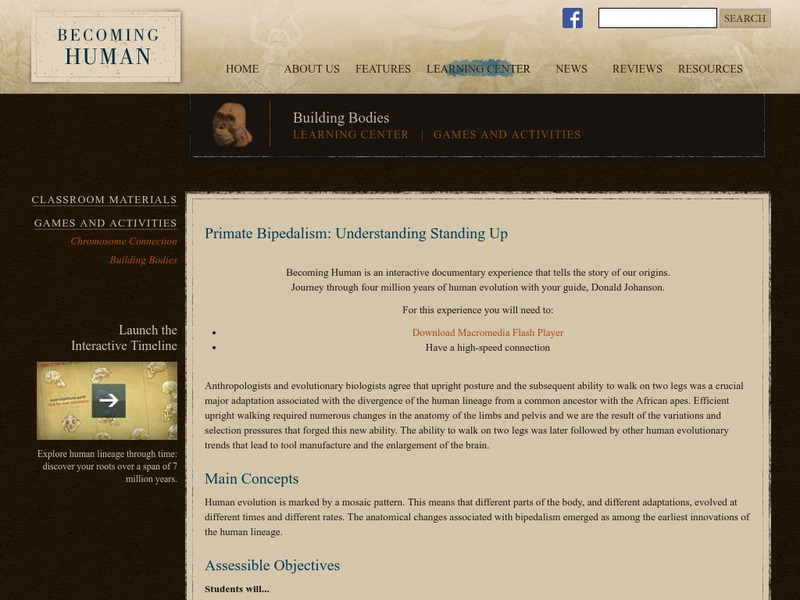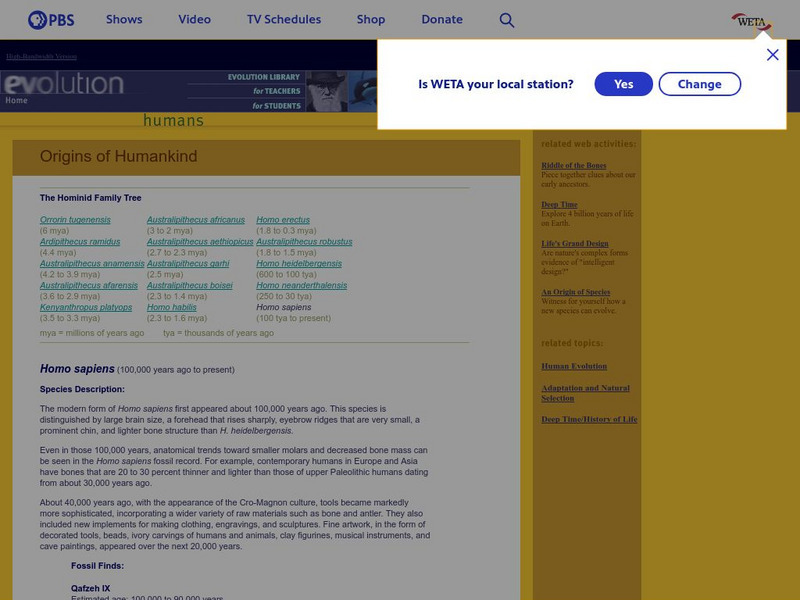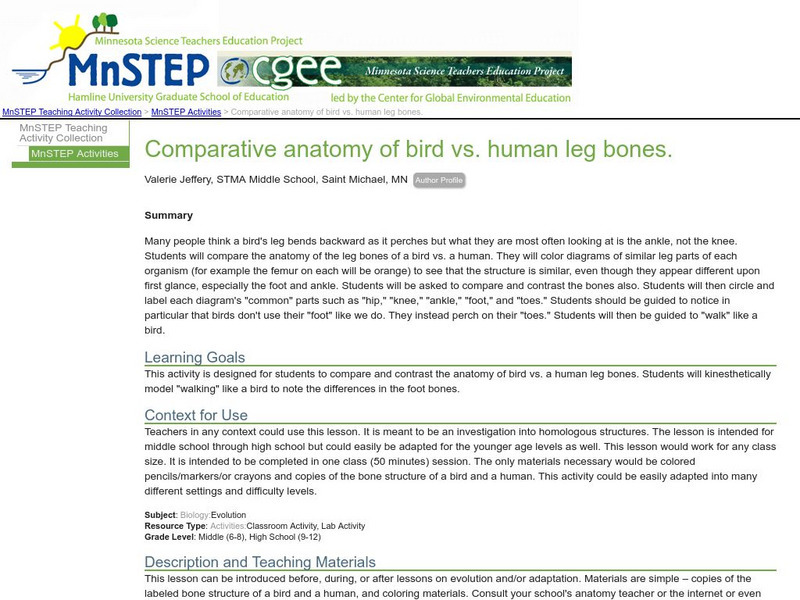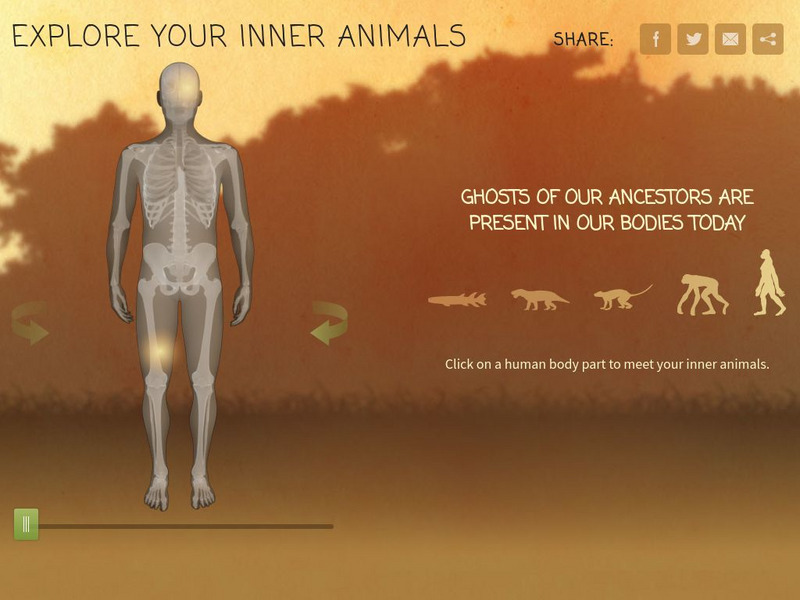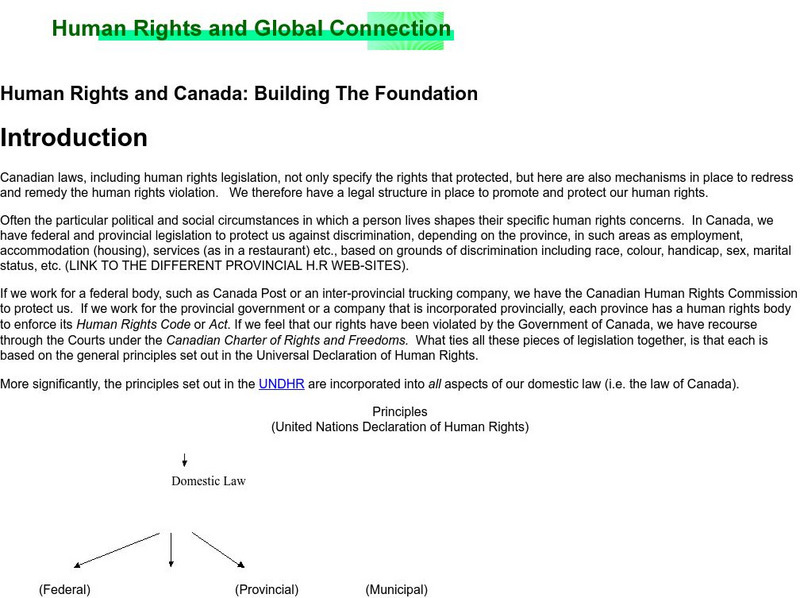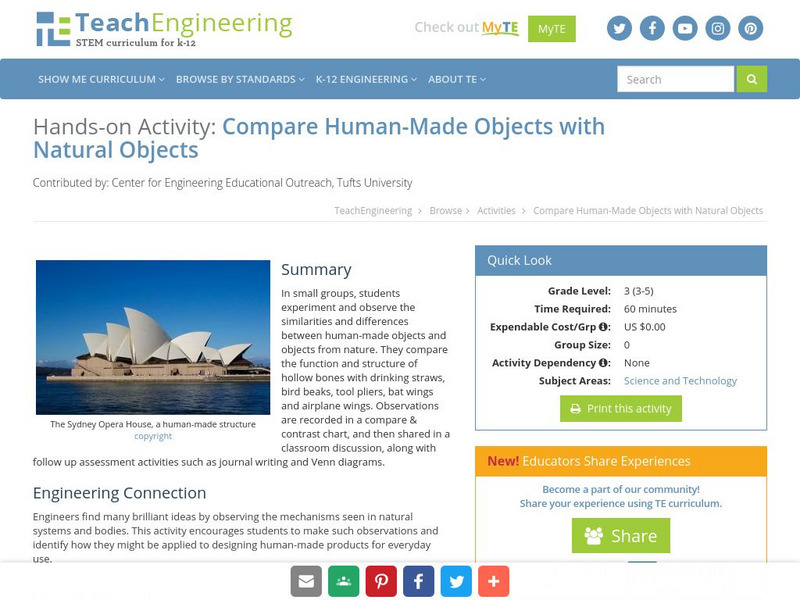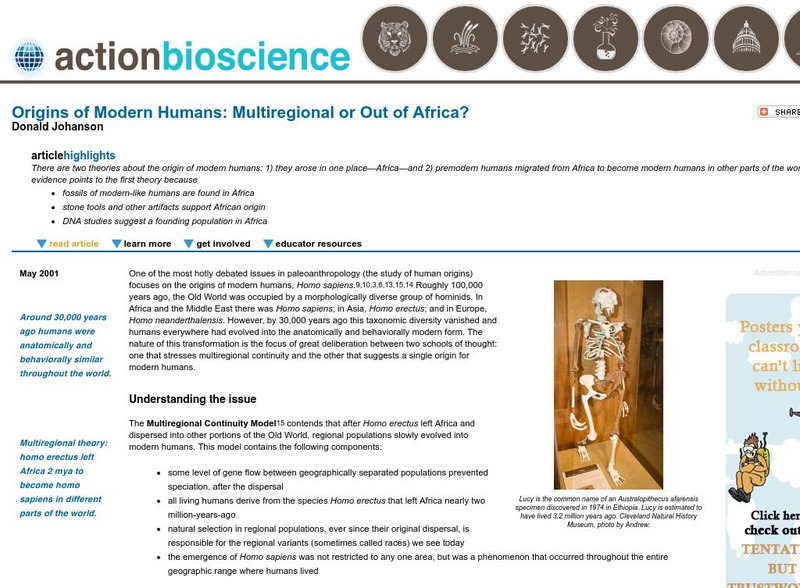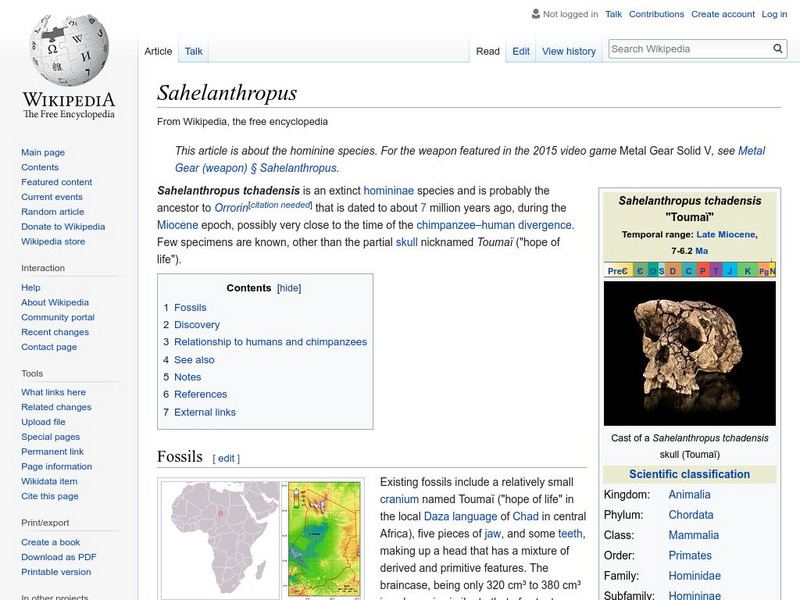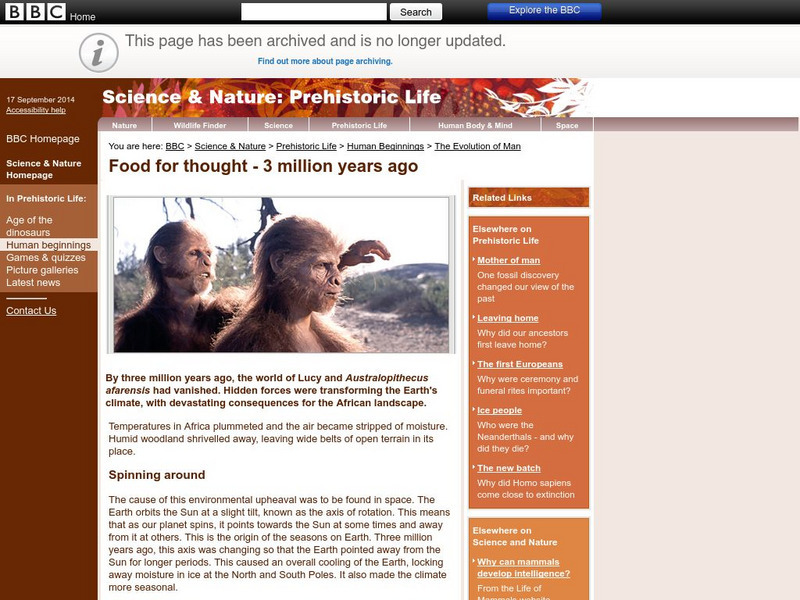Hi, what do you want to do?
Other
Institute of Human Origins: Classifying Life
In this exercise you will build two skeletons, one of an ape and one of a modern human being. The bones have been completely mixed up so its up to you to find the right fit. In this exercise you will learn about the unique...
PBS
Pbs: Evolution: Origins of Humankind: Homo Sapiens
Read a description of Homo sapiens as a species, learn about the variety of Homo sapiens fossils that have been found, and discover evidence of the culture of these early people.
CK-12 Foundation
Ck 12: Life Science: 10.10 Amphibian Evolution and Ecology
Explore the evolution and ecology of amphibians.
Science Education Resource Center at Carleton College
Serc: Comparative Anatomy of Bird vs. Human Leg Bones
This activity is designed for learners to compare and contrast the anatomy of bird and human leg bones. Students will kinesthetically model walking like a bird to note the differences in the foot bones.
Other
Wikia: Human Science: Law, Principle, Theory, Rule
Law, principle, theory, and rule are the four stages necessary in the evolution of social change. Dive into the depths of how each plays their role in the change. Find examples listed to aid in comprehension of each stage, definitions,...
National Humanities Center
National Humanities Center: Teacher Serve: The Rise of Fundamentalism
The National Humanities Center offers an essay on the definition and discussion of generic fundamentalism and historic fundamentalism, with suggestions on how to guide student discussion.
TED Talks
Ted: Ted Ed: Nina Jablonski Breaks the Illusion of Skin Color
In this video, Nina Jablonski explains that human skin pigmentation is a product of the environment and evolution and explores skin's many different traits. [14:46] Includes a brief quiz and a list of additional resources to explore.
Smithsonian Institution
National Museum of Natural History: The Origin of the Genus Homo
The evolution of the Genus Homo is neatly laid out in a chronological fashion beginning with the key change that signaled the origin of Homo, through the evolutionary forms, finalizing with Homo sapiens.
PBS
Wgbh/pbs: Explore Your Inner Animals
Click on a highlighted portion of the skeleton to open up a brief video presentation and written summary explaining how that part of the human has come from our ancient ancestors.
PBS
Pbs Learning Media: Animal Body Plans: Homeobox Genes
The homeobox genes that define the basic body plan of mice and fruit flies are illustrated in this graphic from The Human Evolution Coloring Book by Adrienne Zihlman. The accompanying article describes how these genes act as "molecular...
Science Daily
Science Daily: The Oldest Homo Sapiens
The oldest fossils of modern humans (Homo Sapiens) found near Omo Kibish, Ethiopia, have been identified as being approximately 196,000 years old. This article points out the amazing significance of these findings.
Howard Hughes Medical Institute
Hhmi: Bio Interactive: Explore Your Inner Animals
Did you know parts of our body was inherited from distant animal ancestors? In this interactive students will investigate different anatomical features of the human body to reveal our evolutionary history. Learn how humans share...
PBS
Pbs Teachers, Nova: Little People of Flores: Compare the Brains
Compare and contrast the shape and size of a Homo floresiensis brain with the brain of a chimp and a modern human.
Australian Broadcasting Corporation
Australian Broadcasting Corporation: News in Science: Chimps Have the Jump on Us in Evolution
From ABC News in Science, Larry O'Hanlon's article explores a comparison of genes between chimps and humans which suggests a larger evolutionary jump on the part of the chimps in the span of 6 million years.
Other
Human Rights and Canada: Building the Foundation
This site provides background on the history of human rights in Canada and events that influenced their evolution. It explains how the principles of the United Nations Declaration of Human Rights is embedded in Canadian laws that protect...
TeachEngineering
Teach Engineering: Compare Human Made Objects With Natural Objects
In small groups, students will experiment and observe the similarities and differences between human-made objects and nature. The students will compare the function and structure of hollow bones with drinking straws, bird beaks, tool...
American Institute of Biological Sciences
Action Bioscience: Origins of Modern Humans: Multiregional or Out of Africa
Two migration theories are on the table for consideration. Weigh the evidence of each one in this article by Donald Johanson of Lucy fame.
Khan Academy
Khan Academy: Foraging
An article discussing the evolution of humans and animals relying on nature for their food. Learn about how humans have used the natural environment to hunt and gather food.
American Institute of Biological Sciences
Action Bioscience: The Challenge of Living at High Altitudes
Physical anthropologists are studying the ongoing evolution of modern humans. This article features research done on those living in high altitudes over thousands of years with the intention to discover things such as the role of natural...
Khan Academy
Khan Academy: Activity: Historos Cave
An activity for students to draw conclusions about how early humans lived by drawing on information from earlier lessons and researching caves.
Khan Academy
Khan Academy: Lucy and the Leakeys
An article that discusses the Leakey's investigations to find human origins in Africa.
Wikimedia
Wikipedia: Sahelanthropus
An encyclopedia article on the oldest known hominid discusses the features of the fossils that were found, the region in which they were found, and what this means for human evolution.
Curated OER
Unesco: Israel: Sites of Human Evolution at Mount Carmel
Situated on the western slopes of the Mount Carmel range, the site includes the caves of Tabun, Jamal, el-Wad and Skhul. Ninety years of archaeological research have revealed a cultural sequence of unparalleled duration, providing an...
BBC
Bbc: Science and Nature: Three Million Years Ago
Take a trip back to three million years ago and learn about the different animals and their land that relate to the evolution of man. This article offers a look at the challenges and changes faced by our ancestors and suggests several...
Other popular searches
- Human Evolution Webquest
- Stages of Human Evolution
- Human Evolution Cladogram
- Human Evolution Chart
- Human Evolution Web Quest
- Human Evolution Skull
- Human Evolution Food Chain
- Evidences of Human Evolution
- Human Evolution Skull Lab
- Human Evolution Cardiogram
- Human Evolution Dogs
- Human Evolution Time Line





